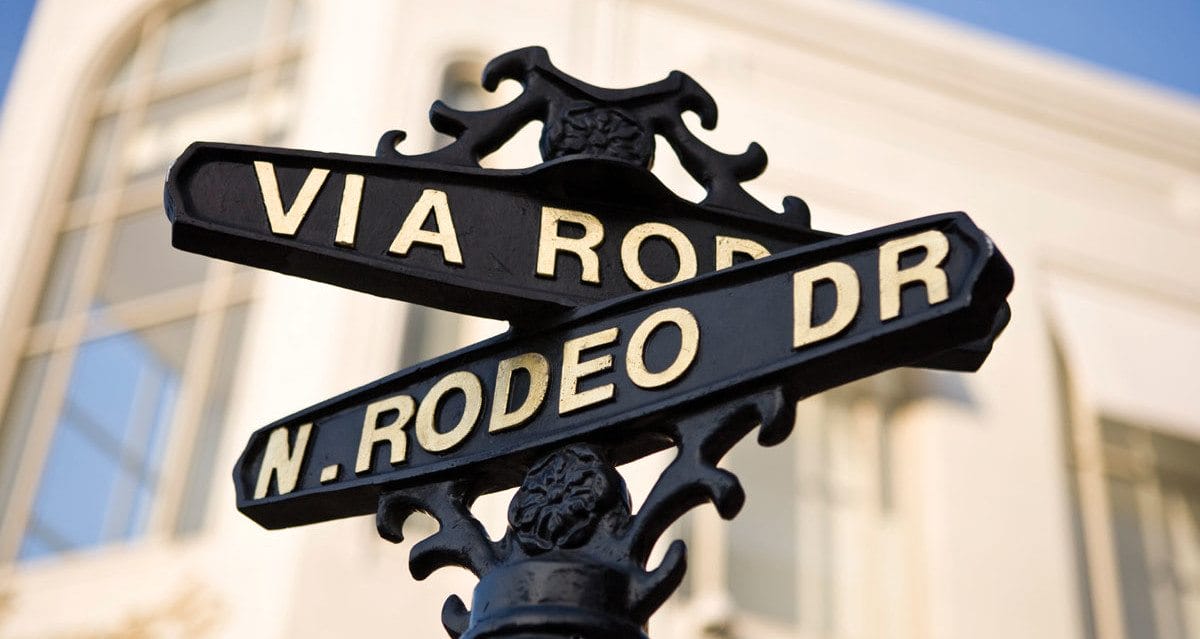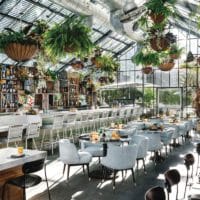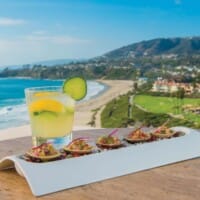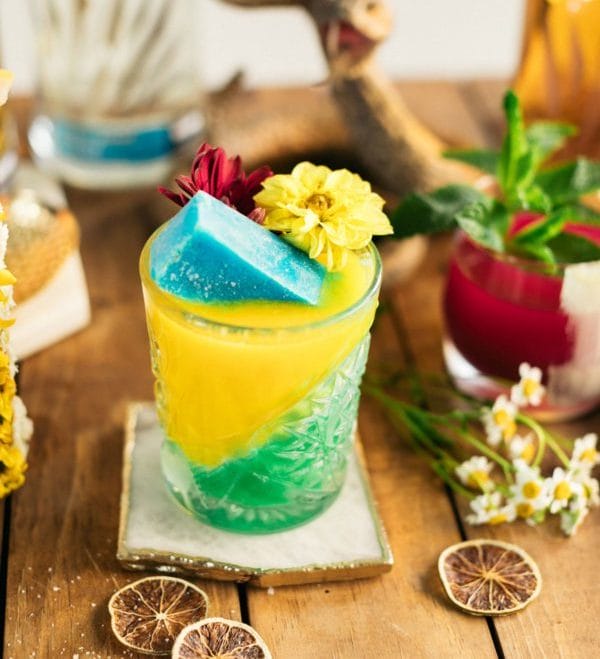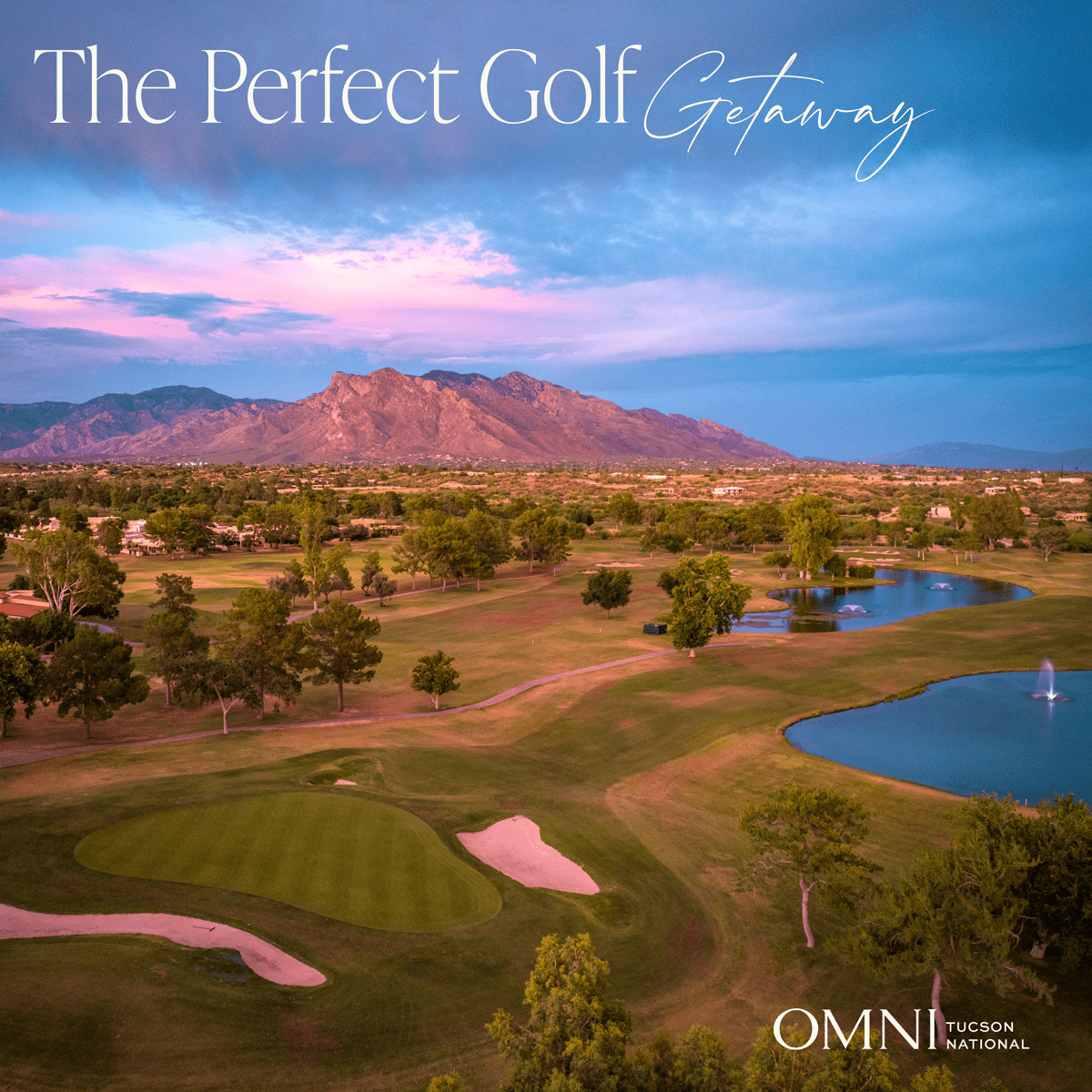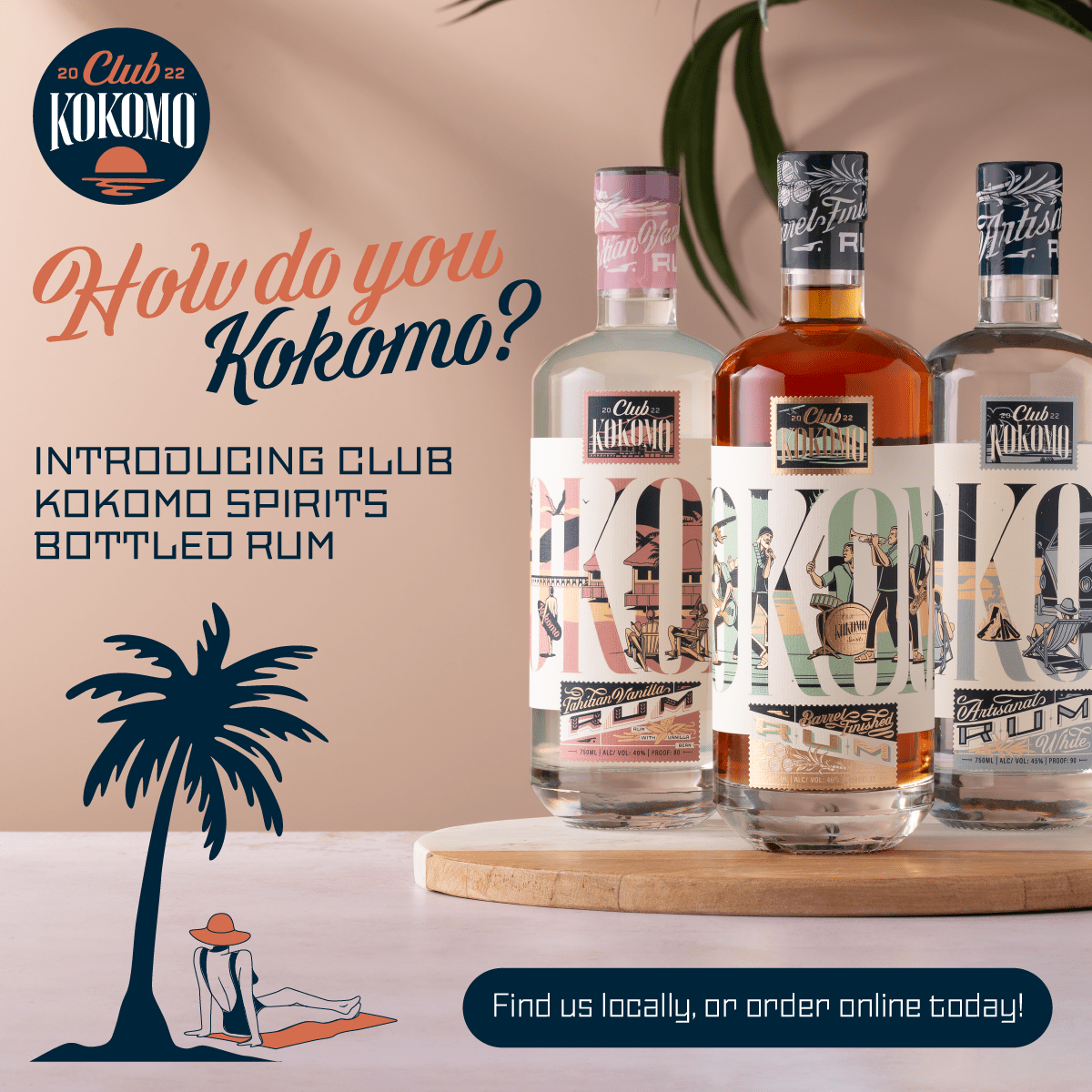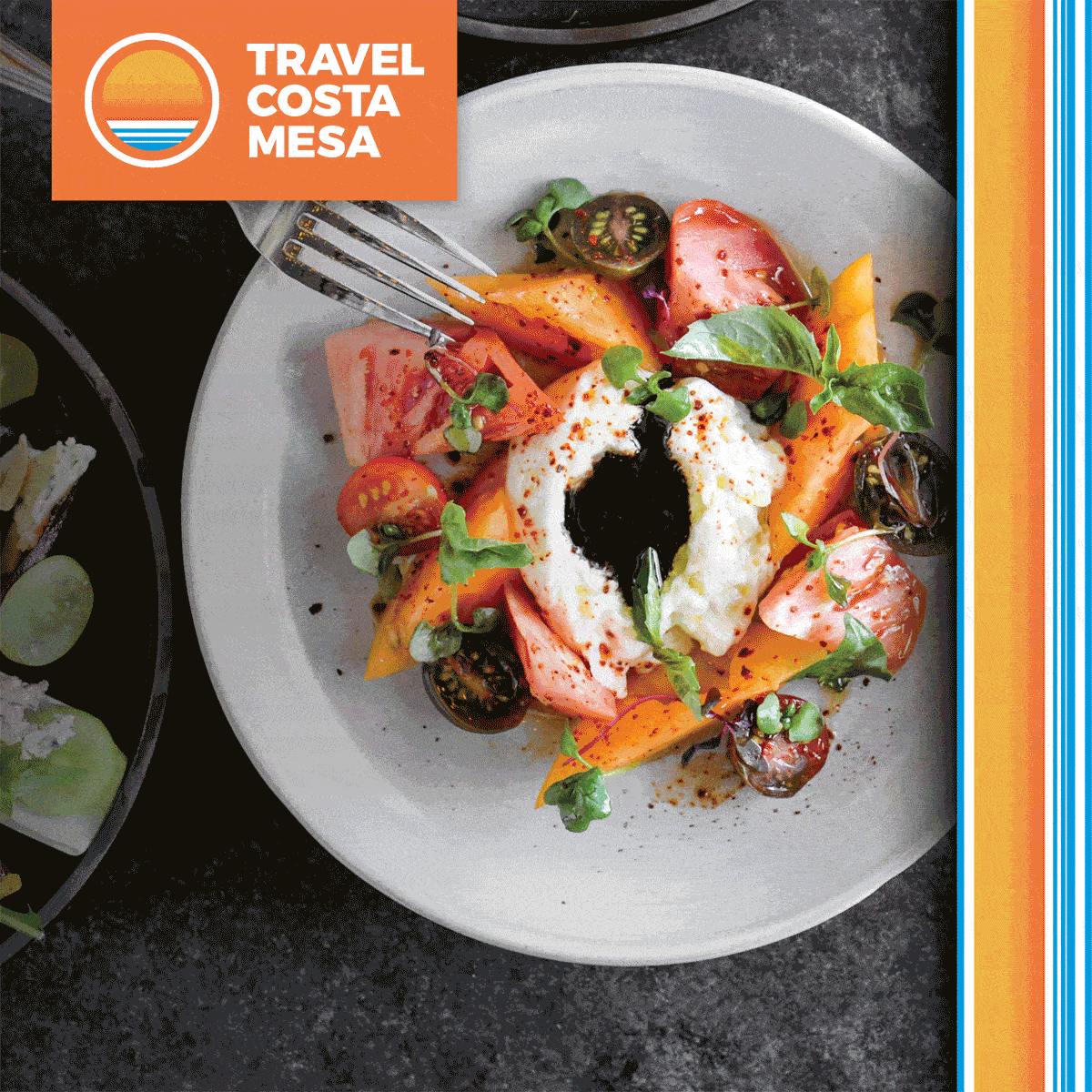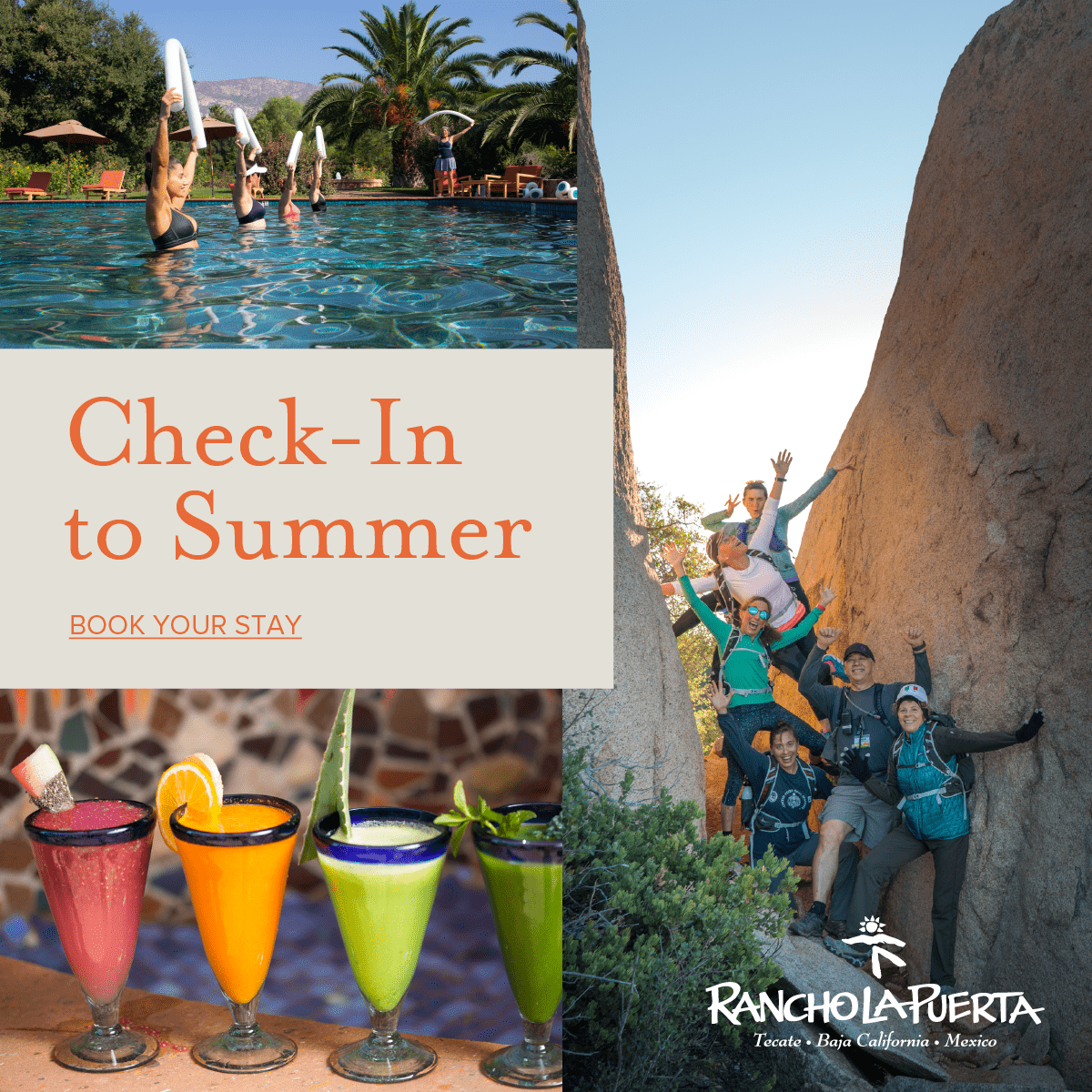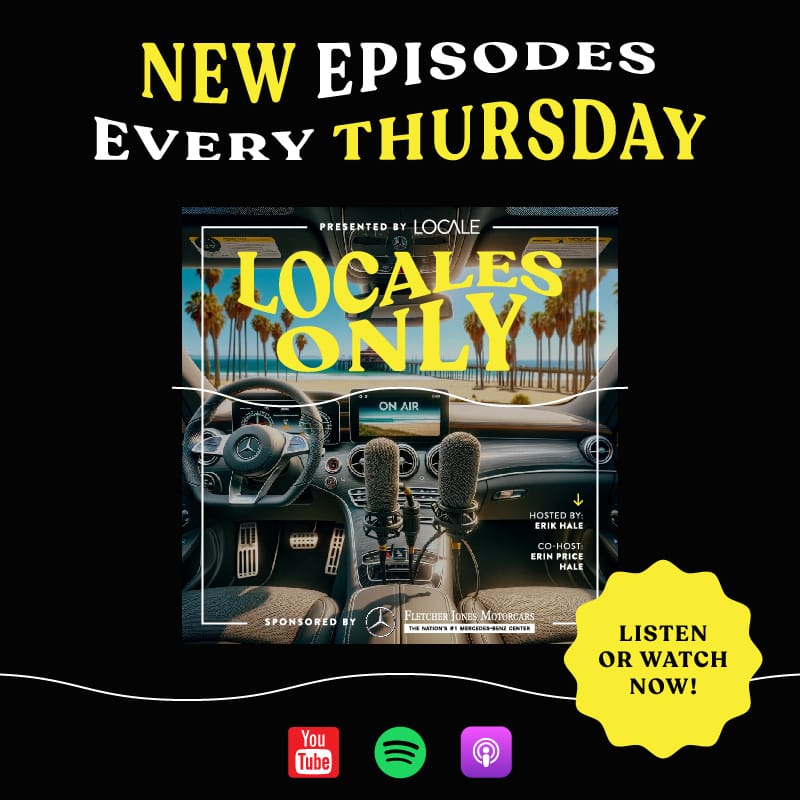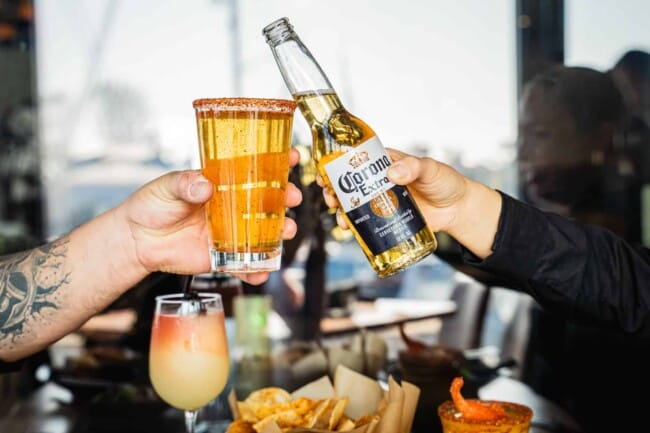Learn About the Shopping Epicenter’s Rich History
Written By: Chelsea Lauren Star-Studded Rodeo Drive has a Surprising Past
Say “Rodeo Drive” nowadays and images are summoned up of stately palm trees paralleling high-end boutiques, rays of sunlight reflecting off the bumpers of luxury cars and handfuls of designer shopping bags. The area is only about half a century old yet it manages to give off an aura of old European nostalgia with its cobblestone streets, romantic archways and fountains that blend classical architectural styles with posh storefronts. Though Hollywood has ingrained this image, making it iconic, Rodeo Drive’s roots are entrenched in humble beginnings.
1769: Gaspar de Portolá (the first governor of provincial California) and his men trekked along an existing Indian trail (present-day Wilshire Boulevard) to what’s now La Cienega Park. The native inhabitants considered the site holy due to the abundant resources and water. They named it The Gathering of the Waters, translated from the Spanish El Rodeo de las Aguas.
1838: The land grant of El Rodeo de las Aguas was deeded to Maria Rita Valdez Villa, the widow of a Spanish soldier. Maria built an adobe ranch house near the intersection of present-day Sunset Boulevard and Alpine Drive. Employing a posse of cowboys, she operated the ranch until 1854 when she sold it to Benjamin Wilson and Henry Hancock for $4, 000.
1880-1888: A drought decimated the crops and cattle, resulting in the ranch changing hands many times. A couple of daring lima bean farmers purchased the land in the 1880s, dreaming to establish the area as a North African-themed subdivision called Morocco. Their dreams were squandered when the national economy collapsed in 1888.
1900: Burton Green and other investors purchased “Morocco” in 1900 for the Amalgamated Oil Company. After drilling a series of unproductive wells, the property was reorganized in 1906 as the Rodeo Land and Water Company—paying homage to the former name. Green and his wife renamed the surrounding land Beverly Hills after Beverly Farms, Massachusetts.
1912: Though the street was officially named in 1906, the history of Rodeo Drive began in 1912 with the opening of the Beverly Hills Hotel. The hotel offered access to Santa Monica Boulevard and Wilshire Boulevard via a network of bridle paths—Rodeo Drive serving as a main one. The Beverly Hills Hotel now stands where Maria’s adobe home once was.
1964: An ordinary street in the 1960s, with just a grocery store, a gas station and a hardware store, Rodeo Drive had much potential. Fred Hayman saw that. Already working for the new Beverly Hilton, he jumped on the opportunity to open the first luxury boutique in 1964, Giorgio Beverly Hills.
1976: Designer Bijan Pakzad made a name for himself on Rodeo Drive. Simply known as “Bijan”, the store is known for being the most expensive, by appointment-only boutique in the world. The late Bijan’s yellow Bugatti Veyron (worth $1.7 million) is often seen parked in front of his bright yellow store.
Today: For architecture fans, Frank Lloyd Wright’s Anderton Court displays some modern zig-zag construction. Along with that, just a few blocks north of Rodeo Drive is the O’Neill House—featuring sinuous lines in the art-nouveau style, inspired by the Catalán master, Antonio Gaudí.T A K E /// A Ride Down a Timeline of Rodeo Drive.
-
Locale Magazinehttps://localemagazine.com/author/admin-3/
-
Locale Magazinehttps://localemagazine.com/author/admin-3/
-
Locale Magazinehttps://localemagazine.com/author/admin-3/
-
Locale Magazinehttps://localemagazine.com/author/admin-3/


